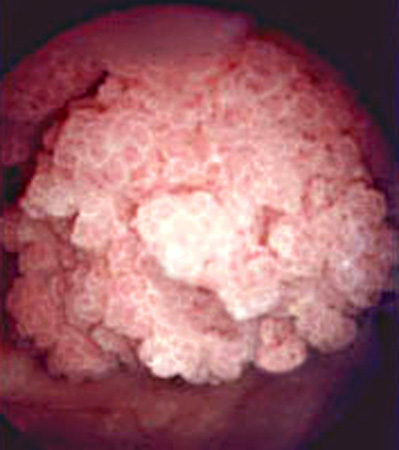Summary
Differentials
Common
- Benign prostatic hyperplasia (BPH)
- Urinary tract infection (UTI)
- Acute pyelonephritis
- Bladder cancer
- Prostate cancer
- Kidney stone
- Instrumentation of the urinary tract
- Menstruation
Uncommon
- Renal trauma
- Bladder trauma
- Urethral trauma
- Sickle cell anemia
- Coagulopathy
- Cystic kidney disease
- Arteriovenous malformation
- Renal vein thrombosis
- Alport syndrome
- Extrapulmonary tuberculosis
- Benign familial hematuria (thin basement membrane nephropathy)
- Postinfectious glomerulonephritis
- Membranoproliferative glomerulonephritis
- Rapidly progressive glomerulonephritis
- IgA nephropathy
- Systemic lupus erythematosus (SLE)
- Renal cancer
- Metastatic renal cancer
- Urethral cancer
- Penile cancer
- Placenta percreta
- Endometriosis
- Bladder stone
- Radiation cystitis
- Nephrotoxic/cytotoxic drugs
- Anticoagulation
- Exercise-induced hematuria
- Loin pain hematuria syndrome
- Pseudohematuria
Contributors
Authors
Simon Y. Kimm, MD

Clinical Fellow and Instructor
Division of Urologic Oncology
Memorial Sloan-Kettering Cancer Center
New York
NY
Disclosures
SYK declares that he has no competing interests.
Peer reviewers
Lynda Frassetto, MD
Associate Professor of Medicine
Division of Nephrology
University of California at San Francisco
CA
Disclosures
LF declares that she has no competing interests.
Michael Fischer, MD
Assistant Professor of Medicine
University of Illinois
Chicago College of Medicine
Department of Nephrology
Chicago
IL
Disclosures
MF declares that he has no competing interests.
Junaid Masood, MBBS, FRCS (Eng), MSc (Urol), FRCS (Urol)
Consultant Urological Surgeon
Bart's and The London NHS Trust
London
UK
Disclosures
JM declares that he has no competing interests.
Vinod Nargund, PhD, FRCS (Urol), FEBU
Consultant Urological Surgeon
Homerton University and Bartholomew's Hospitals
London
UK
Disclosures
VN declares that he has no competing interests.
Peer reviewer acknowledgements
BMJ Best Practice topics are updated on a rolling basis in line with developments in evidence and guidance. The peer reviewers listed here have reviewed the content at least once during the history of the topic.
Disclosures
Peer reviewer affiliations and disclosures pertain to the time of the review.
References
Key articles
European Association of Urology. EAU guidelines on urological trauma. Mar 2025 [internet publication].Full text
American Urological Association. Urotrauma (2020). Apr 2020 [internet publication].Full text
Nielsen M, Qaseem A. Hematuria as a marker of occult urinary tract cancer: advice for high-value care from the American College of Physicians. Ann Intern Med. 2016 Apr 5;164(7):488-97.Full text Abstract
American College of Radiology. ACR appropriateness criteria: hematuria. 2019 [internet publication].Full text
Reference articles
A full list of sources referenced in this topic is available to users with access to all of BMJ Best Practice.

Patient information
Cystitis
Enlarged prostate: what is it?
More Patient informationVideos
Venepuncture and phlebotomy: animated demonstration
More videosLog in or subscribe to access all of BMJ Best Practice
Use of this content is subject to our disclaimer